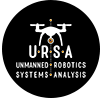Defining CUAS effectiveness should be simple but the effort is complicated by many factors such as use case, intended outcome, and rules of engagement. I’ve been told on many occasions that the DOD isn’t terribly concerned about quantifying effectiveness. Their standard for effectiveness is essentially “Did the system stop the UAV before it could accomplish its mission?” This is easy to understand, fairly easy to measure, and inadequate for any use case that doesn’t allow for UAV neutralization. But even if you can kill the inbound UAV, detection range, false positive rates, and tracking accuracy in a variety of environments are all important characteristics to know before you trust your assets to the. system.
We, the CUAS community, should agree on many other terms. In another post we will cover some of the issues relating to CUAS data exchange and the associated need for standards.. Let’s start off with what it means to detect, classify, locate, track, and mitigate.
A respected colleague offered the following examples of some terms that must be agreed upon when evaluating and reporting on CUAS evaluations:
Detect: The moment that a C-sUAS system notifies an operator that a sUAS-like object(s) is present within the range of its sensing capabilities. Based on its capabilities and configuration, a C-sUAS systems may report any object (including birds and commercial planes) in its view as a detection. Note: there may be more than one object detected at one time.
Classify: Once detected, a C-sUAS system, with or without augmentation from its operator, determines that the detection is an sUAS(s). Note: there may be more than one sUAS detected and classified at one time.
Locate: A determination of where the sUAS is at a given moment. Based on C-sUAS system capabilities, the location may be a 3-dimensional point in space, a circle/sphere to indicate estimated center and location error, a line of bearing (azimuth and elevation), or other form of location.
Track: A track is a compilation of location reports over a period of time. Tracks can be displayed as a line or a sequence of dots.
Mitigate: Mitigate relates to negate, interdict, neutralize, or destroy. It is important to be able to identify the the point at which a C-sUAS system prevents/stops a sUAS(s) from accomplishing its mission – a.k.a. removes or reduces the threat posed by a UAS. Approaches include RF or GPS jamming, spoofing/hijacking and kinetic attack; however, for DoJ, the latter approach must be low-regret (e.g., capturing with a net).
If we say “The system detected a UAS” we likely expect everyone to understand what we mean. But where is that event presented – in a log file, on the user interface, or via an audible alert? What was detected – was it really a UAS, implying that some discrimination occurred prior to the alert? Is it friendly or malicious? Is the detection part of an existing track or a new track?
A common understanding of such terms is important to eliminate confusion and enhancing collaboration among vendors, evaluators, and operators.
